Home » Bird Netting – Perth WA
Crackpots Rural
Quality bird netting to protect your crops
Bird netting is a great way to protect your crops and get the best harvest possible. We have netting options for orchards, temporary throw over netting, netting solutions for warehouses & sheds; as well as bird netting for ponds and aquaculture dams.
How do you choose the right bird netting for your application?
Before you purchase your netting, its important to understand the type of netting that best suits your requirements. Below we discuss what we recommend for permanent installs, seasonal protection, as well as aquaculture.
Bird netting for Permanent Orchard Structures
Our netting is 1 ¼″ black, 6-ply netting made from UV-treated, black hard-twisted polyethylene twine. It’s small enough to keep little birds like silvereyes away from your fruit but will allow pollinating insects like bees and butterflies to pass through.
Our premium heavy-duty 6-ply netting is perfect for permanent orchard structures where the netting is installed permanently and is under constant tension. Using the 6-ply netting ensures that your orchard structure will last for many years – some of our customers have had theirs installed for over 15 years.
We also recommend 6-ply netting for building chook pens and cat enclosures.
Best Bird netting for protecting individual fruit trees
We recommend our premium standard 1 ¼” 4-ply netting as a temporary option, for instance, using it as a throw-over netting solution for a single tree or a couple of trees during the fruiting season. The netting is the same size as the 6-ply netting, so it will keep out small birds like green and silvereyes; however, it does need to be put out and brought in each year. If you know the piece sizes you need, you can order the throw-over netting online and have it delivered directly to your door.
TIP – Secure the throw-over netting around the base of your tree, or birds can access the fruit by going underneath the netting.
Bird Netting for Dams & Aquaculture
In addition to our 1 ¼” netting, we stock and supply a range of other bird net sizes that will suit everything from a pond to a large-scale dam. Depending on which birds you need to exclude, there’s a netting option available to help. Generally, 3” 9-ply net is best suited for keeping medium-sized birds off ponds, but it will also work to exclude larger birds as well. The 6” 12-ply bird net can be used if you’re only targeting larger birds.
| Netting Size | Thickness | Aperture Size | Application |
|---|---|---|---|
| 3” | 9 Ply | 38mm x 38mm | Mainly Industrial Setting – protecting ponds & nut trees from medium birds (parrots, doves, kookaburras) & larger birds. |
| 6 “ | 12 | 75mm x 75mm | Farm Dams – exclusively protects against larger birds ( herons, ducks, shags etc) |
| 6” | 15 Ply | 75mm x 75mm | Farm Dams – exclusively protects against larger birds (herons, ducks, shags etc) |
Are there different ways to make bird netting?
Fundamentally there are two distinct ways to make netting. One is knitting & the other is knotting. We believe in supplying a product that will last for many years, which is why we have chosen black knotted netting.
Advantages of Crackpots Knotted Netting
| Feature | Benefit |
|---|---|
| Made from black hard twisted polyethylene twine |
|
| UV Treated |
|
| Low Profile |
|
| Knots at corner of every mesh |
|
| Easily tensioned |
|
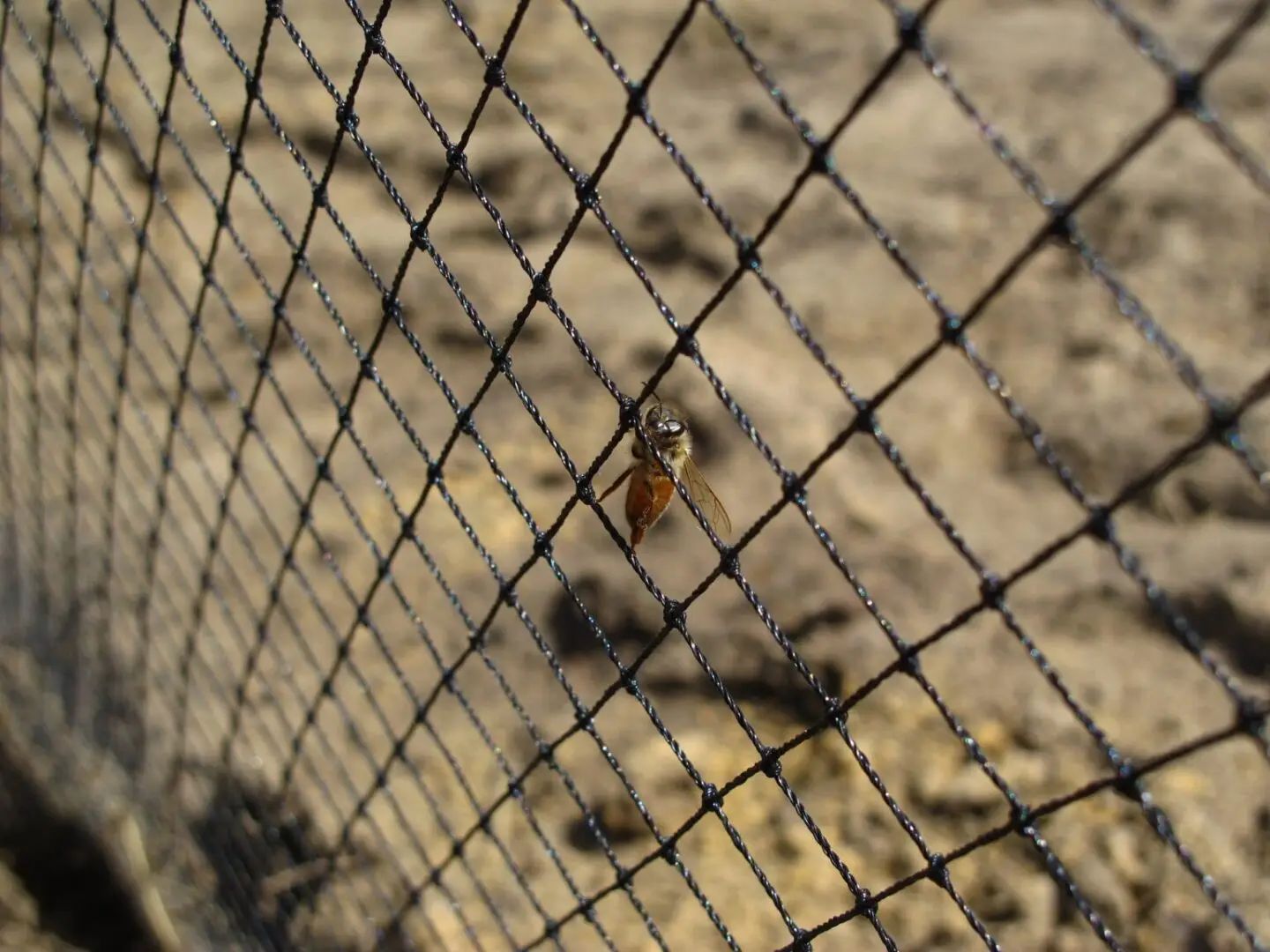
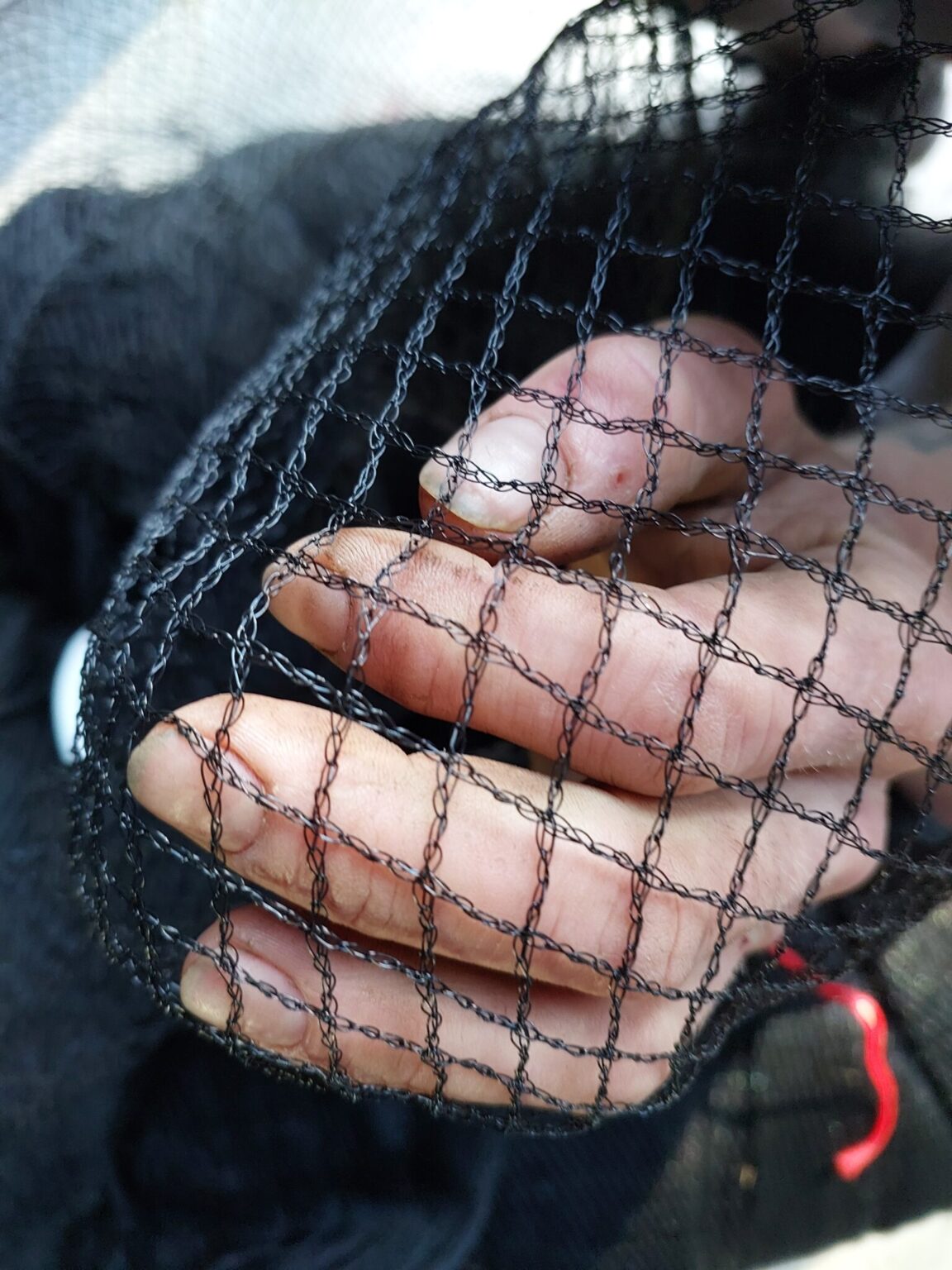
You can see how the open construction of knitted netting attracts moisture and dust, making the netting heavier, more likely to sag, and susceptible to tearing.
Furthermore, knitted netting is not easily repaired if it becomes damaged.
How is bird netting measured?
It’s easy to become confused about how bird netting sizes are measured. In short, the measurement or size of the netting (nearly always in inches, not centimetres or millimetres!) refers to the gaps between the knots when it is fully stretched, not the sides of each mesh. Remember, bird netting is diamond-shaped, NOT square.
Here’s a quick guide:
1 ¼” bird netting:
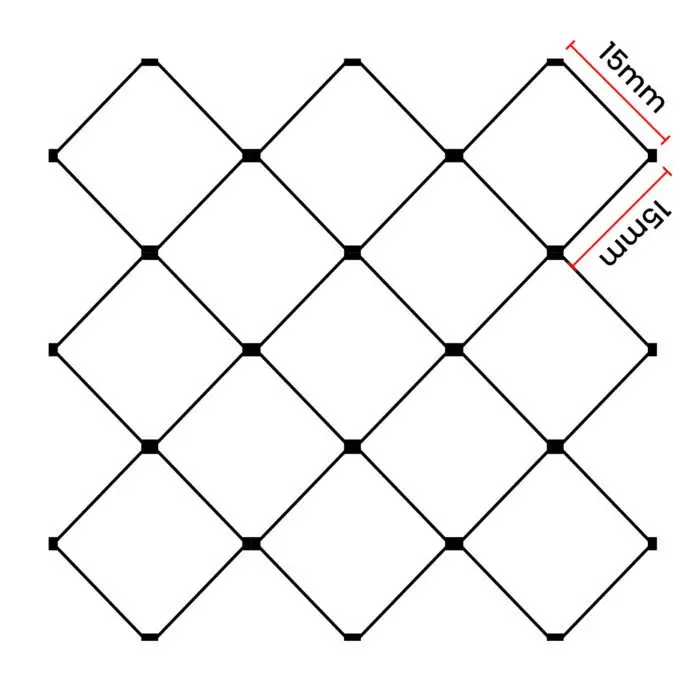

Each mesh measures 15mm x 15mm when fully open, and 1 ¼” between knots when fully stretched.
3” bird netting:
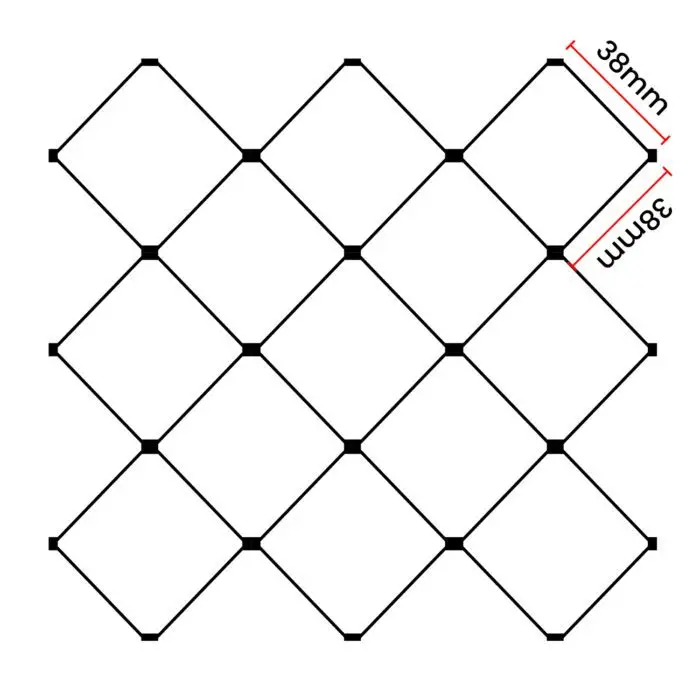

Each mesh measures 38mm x 38mm when fully open, and 3” between knots when fully stretched.
6” bird netting:
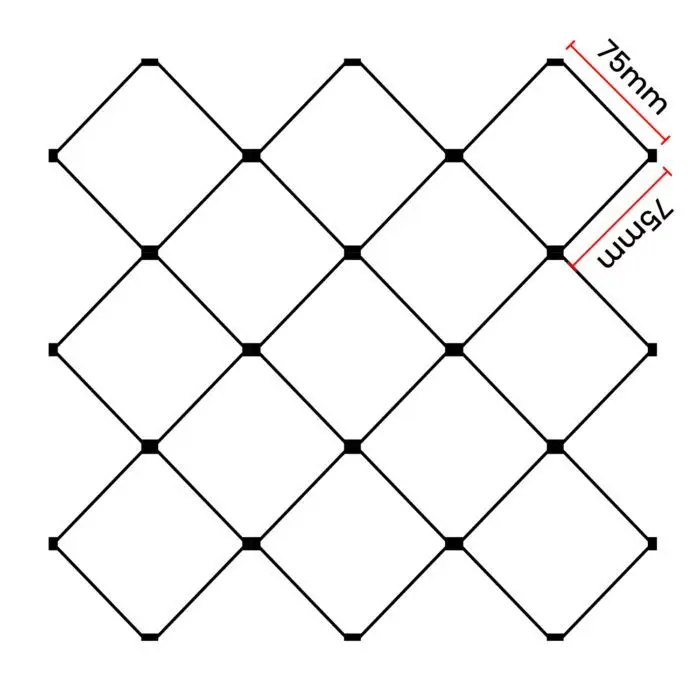

Each mesh measures 75mm x 75mm when fully open, , and 6” between knots when fully stretched.

